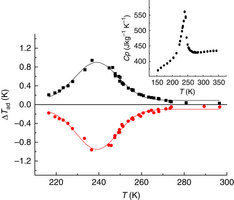Josep Lluís Tamarit, professor d'Enginyeria Física ha publicat un article a Nature Communications junt amb altres investigadors
22/12/2011
Josep Lluís Tamarit, professor d'Enginyeria Física, junt amb altres investigadors, ha publicat un article a Nature Communications titulat "Inverse barocaloric effect in the giant magnetocaloric La–Fe–Si–Co compound".
Application of hydrostatic pressure under adiabatic conditions causes a change in temperature in any substance. This effect is known as the barocaloric effect and the vast majority of materials heat up when adiabatically squeezed, and they cool down when pressure is released (conventional barocaloric effect). There are, however, materials exhibiting an inverse barocaloric effect: they cool when pressure is applied, and they warm when it is released. Materials exhibiting the inverse barocaloric effect are rather uncommon. Here we report an inverse barocaloric effect in the intermetallic compound La-Fe-Co-Si, which is one of the most promising candidates for magnetic refrigeration through its giant magnetocaloric effect. We have found that application of a pressure of only 1 kbar causes a temperature change of about 1.5 K. This value is larger than the magnetocaloric effect in this compound for magnetic fields that are available with permanent magnets.

Comparteix: